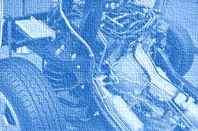
The property the subject of the theft is a vehicle. A vehicle can be viewed not as a single item of property but a collection of components, each one in their own right an item of ‘property’, which can be detached and sold separately to an established market. The obvious components are the engine, transmission, interior, shell and chassis.
But what of the tyres, glass and cosmetic items (to include ICE); even the fuel in the tank, if they were applied by a subsequent keeper AFTER the original theft? To whom do they belong? Whilst the title in the original vehicle may not have passed, the replacement components added by the new keeper did not form part of the original vehicle at the time of loss.
Similarly, if acquired in a damaged condition and subsequently repaired, either by an innocent vendor or an innocent purchaser, a considerable proportion of the vehicle’s monetary value may be as a result of the innocent purchaser’s expenditure. Therefore, handing a vehicle back to the original victim without carrying out some of these basic enquiries can cause greater harm than the original offence.
Vehicle crime is long overdue for a national policy related to identifying innocent purchasers, particularly where fraud is concerned (see: ‘17 pre-purchase enquiries‘ & ‘19 Fraud‘).